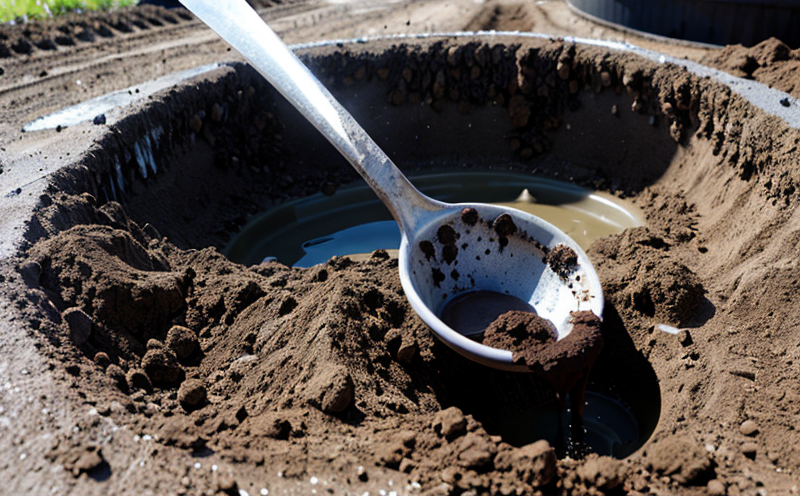OECD 203 Fish Acute Toxicity of Sludge Extract Test
The OECD 203 Fish Acute Toxicity of Sludge Extract Test is a critical component in the evaluation and management of wastewater sludge and biosolids. This test provides essential data for assessing the environmental impact of sludge discharge into aquatic ecosystems, ensuring compliance with international standards.
Sludge and biosolids are byproducts of wastewater treatment processes. Proper management of these materials is crucial due to their potential toxicity when released directly into water bodies or used as soil amendments. The OECD 203 test focuses on determining the acute effects of sludge extracts on fish, which can serve as a proxy for assessing broader aquatic impacts.
The test involves preparing a sludge extract and exposing it to fish under controlled conditions. The primary endpoint is mortality rates within a set period, typically 96 hours. This information helps regulators and facility operators make informed decisions about the safe handling of sludge.
Understanding the toxicity levels is vital for several reasons:
- Environmental Protection: Ensuring that discharged materials do not harm aquatic life.
- Regulatory Compliance: Meeting international standards and guidelines for wastewater treatment and sludge management.
- Risk Assessment: Identifying potential risks associated with the use of biosolids in agriculture or other applications.
The OECD 203 test is part of a broader suite of tests that support comprehensive environmental assessments. By integrating these tests into routine monitoring, facilities can ensure sustainable practices and minimize ecological impacts.
| Applied Standards | Description |
|---|---|
| OECD Guideline for Testing of Chemicals No. 203 | The OECD guideline defines the methodology and protocol used in performing this test. |
| ISO 16005:2014 | International standard for the preparation of water samples from wastewater treatment plants. |
| ASTM E389-12 | American Society for Testing and Materials guideline for fish toxicity testing. |
The OECD 203 test is conducted in a manner consistent with these standards, ensuring uniformity and reliability across different laboratories. The protocol involves several key steps:
- Sample Preparation: Sludge extracts are prepared according to standardized procedures.
- Test Setup: Fish are acclimated and exposed to the sludge extract under controlled conditions.
- Data Collection: Mortality rates are recorded at intervals throughout the test period.
The results of this test provide valuable insights into the potential risks associated with sludge use, enabling stakeholders to make informed decisions about its disposal or reuse. This information is crucial for maintaining ecological balance and ensuring compliance with regulatory requirements.
Applied Standards
| Standard | Description |
|---|---|
| OECD Guideline for Testing of Chemicals No. 203 | The OECD guideline defines the methodology and protocol used in performing this test. |
| ISO 16005:2014 | International standard for the preparation of water samples from wastewater treatment plants. |
| ASTM E389-12 | American Society for Testing and Materials guideline for fish toxicity testing. |
Environmental and Sustainability Contributions
The OECD 203 Fish Acute Toxicity of Sludge Extract Test plays a pivotal role in environmental sustainability by providing actionable data for the safe management of sludge. By identifying toxic components, this test supports efforts to minimize ecological harm and promote responsible waste disposal practices.
Sludge contains various substances that can be harmful if not properly managed. The OECD 203 test helps identify these potentially hazardous elements early in the process, allowing for targeted interventions. This proactive approach contributes significantly to environmental protection by preventing unintended releases of contaminants into natural water bodies.
In addition to protecting aquatic ecosystems, this test also supports sustainable waste management practices. By ensuring that sludge is handled responsibly, facilities can reduce their environmental footprint and contribute positively to sustainability goals. This includes minimizing greenhouse gas emissions associated with improper disposal methods and promoting circular economy principles through the responsible use of biosolids.
The results from the OECD 203 test are invaluable for making informed decisions about sludge management strategies. Facilities can leverage these insights to implement best practices that align with broader sustainability objectives, such as reducing energy consumption during processing or optimizing nutrient recovery processes.
Use Cases and Application Examples
The OECD 203 Fish Acute Toxicity of Sludge Extract Test is widely applicable across various sectors, including municipal wastewater treatment plants, industrial facilities, and agricultural operations. Here are some specific use cases:
- Municipal Wastewater Treatment: Ensuring that treated sludge meets discharge standards before being released into local waterways.
- Industrial Waste Management: Evaluating the safety of sludge generated from industrial processes for potential reuse or disposal.
- Agricultural Applications: Assessing the suitability of biosolids as soil amendments by ensuring they do not introduce harmful substances into agricultural lands.
In each of these scenarios, the OECD 203 test serves as a critical tool for assessing the potential environmental impact of sludge and biosolids. By providing reliable data on toxicity levels, this test supports informed decision-making that prioritizes both regulatory compliance and sustainability.
For example, a municipal wastewater treatment facility might use the results from the OECD 203 test to determine whether it can safely discharge treated sludge into a nearby river without causing harm to aquatic life. Similarly, an industrial plant could rely on these findings to decide if its biosolids should be used as fertilizer or if alternative disposal methods are necessary.
The application of the OECD 203 test extends beyond mere compliance; it also fosters innovation and best practice in waste management. By continuously monitoring and refining sludge handling processes, facilities can improve their overall environmental performance and contribute to a more sustainable future.





